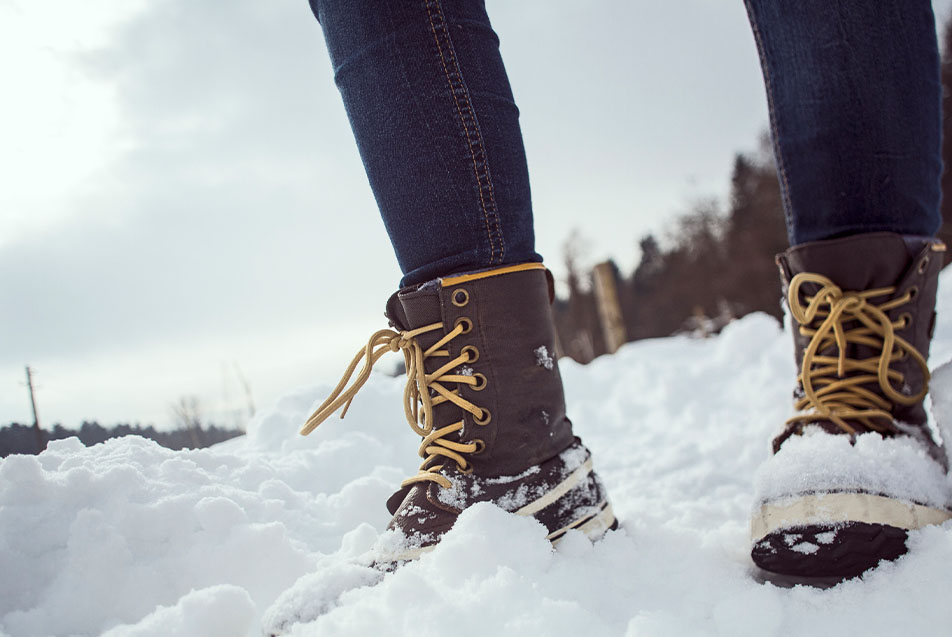
This post was written by Ashley Bojrab, DPM, FACFAS, ABPM, PPG – Podiatry.
In addition to being tough on our mood, low temperatures, snow and freezing rain can be harmful to our bodies. These conditions can lead to issues like frostbite, which can occur anywhere on the body, including the nose, ears, fingers and feet.
Stages of frostbite
Frostnip – Frostnip is irritation to the skin that causes redness and a cold feeling in the body. This does not create any damage to the skin. Continuous cold can create a numbness and prickling sensation. Slowly rewarming the skin is helpful. It’s important to avoid heating skin over a stove, fire or hot water, as this can lead to burning the skin.
Superficial frostbite – With superficial frostbite, the skin color changes and clean blisters can form. Numbness can occur as well at stinging, burning and swelling. This stage of frostbite doesn’t typically result in permanent damage.
Deep frostbite – This is the most severe stage of frostbite. With deep frostbite, all of the layers of the skin are affected. The skin can turn white, gray or even black. The individual might experience numbness, pain and even complete loss of sensation. After the affected area turns black, the tissue dies off. Depending on the extent of the frostbite, amputation could be needed.
Treatment
Typically, frostnip can be managed with home remedies such as gradual rewarming, over-the-counter medications to ease the pain and topical ointments to help heal the skin. If the skin becomes moderate to severely involved, then it would be recommended to see a provider for an evaluation.
Depending on the severity of the exposed area your provider may get an X-ray, bone scan or MRI. These images can help determine if the bone or muscle have been damaged. Again, in extreme cases of severe frostbite, amputation may be necessary.
Prevention
Protect your extremities by wearing warm clothes and proper layer. Also, avoid being outdoors in severe temperatures if possible.



